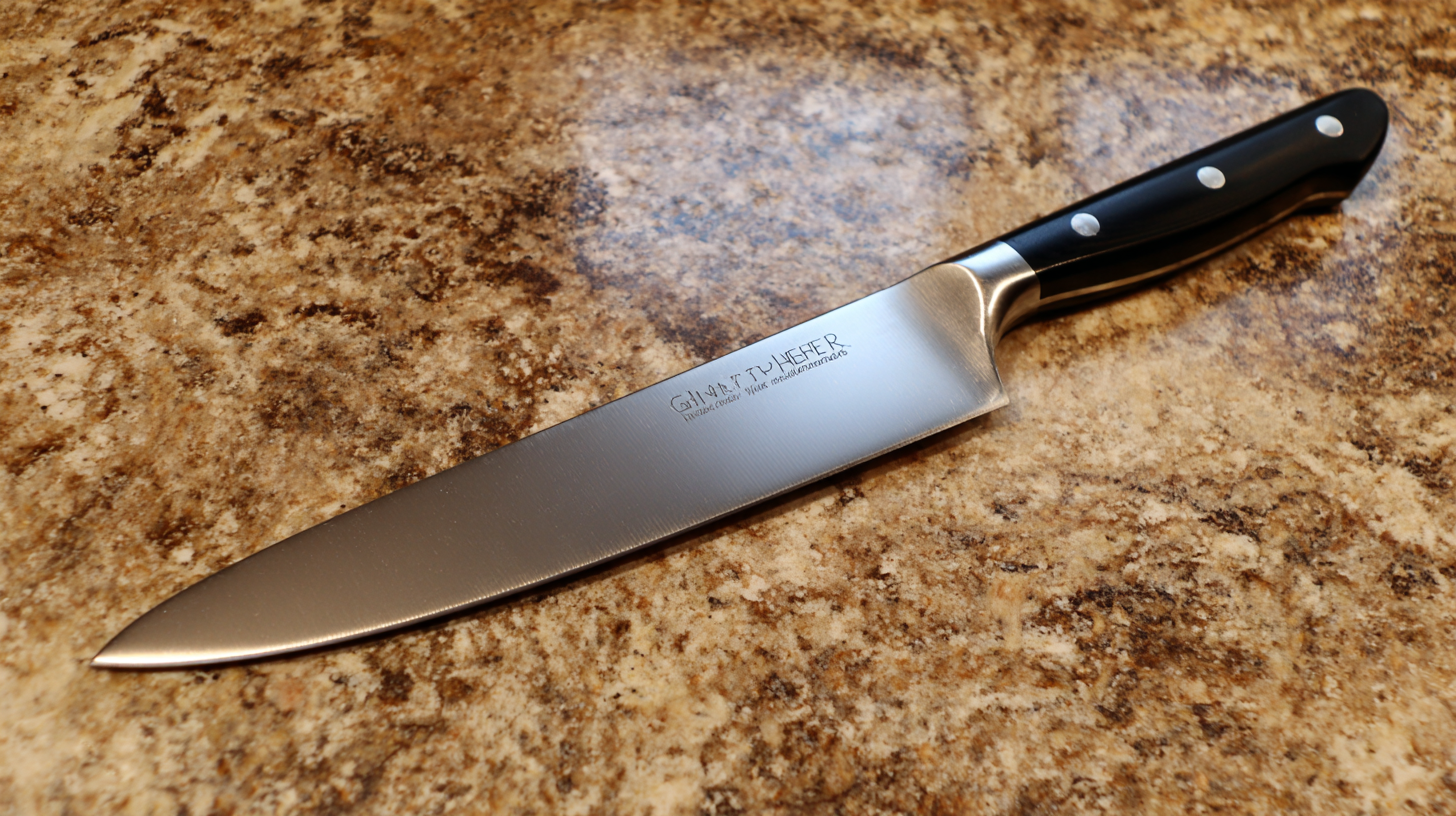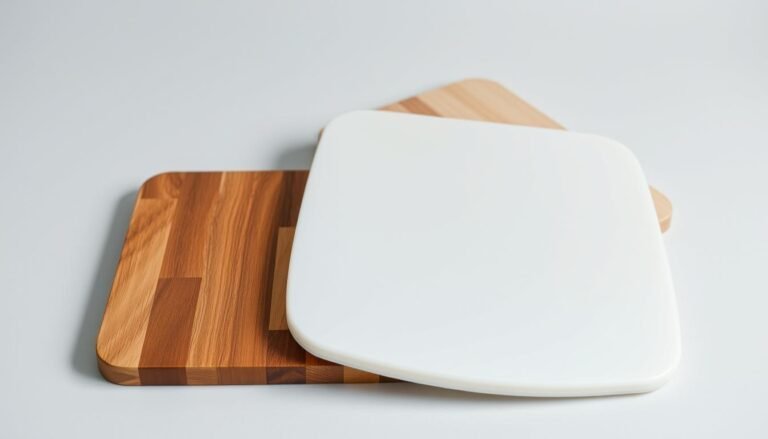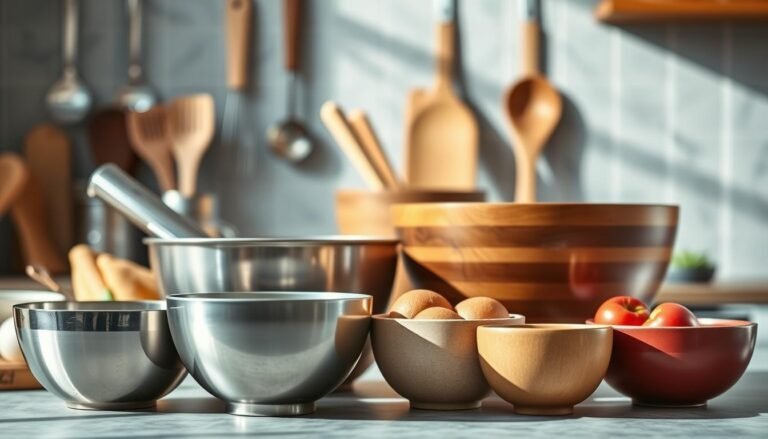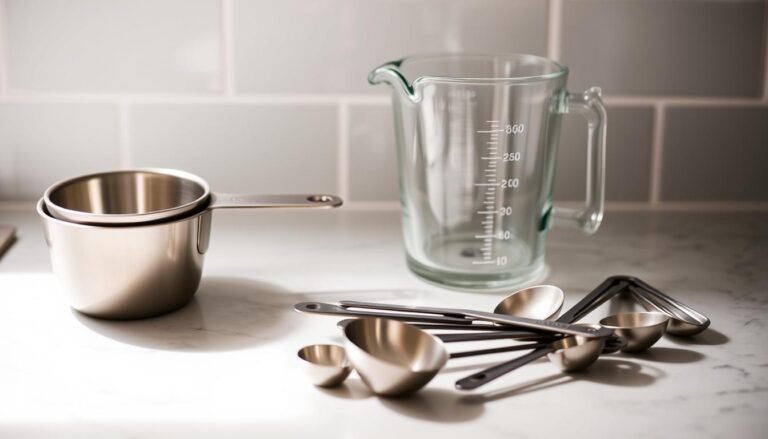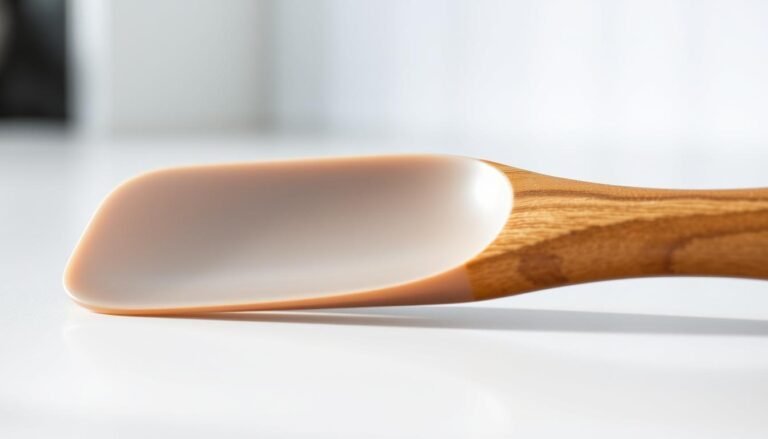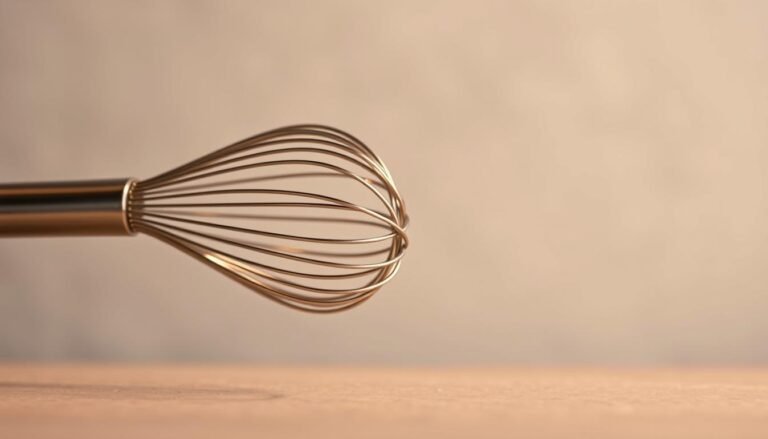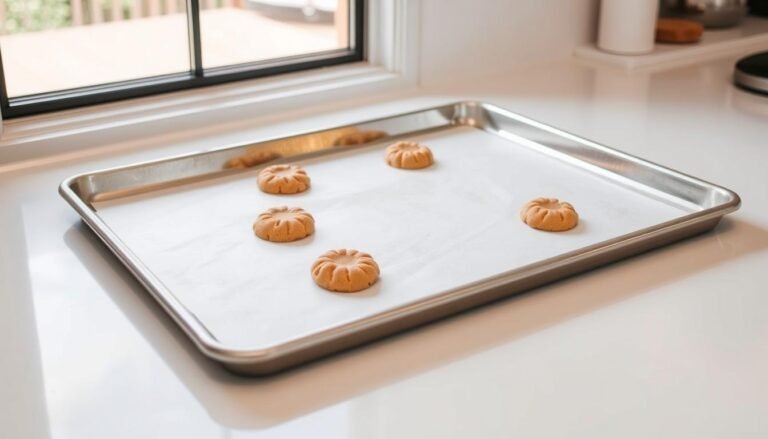Disclosure: This Post Contains Affiliate Links; We earn a commission on purchases.
A high-quality chef’s knife is key in every kitchen. It makes cooking faster, easier, and more fun. It cuts ingredients cleanly and precisely, making them look and feel better.
For home cooks, having a good chef’s knife is a must. It gives you the sharpness you need for different cooking jobs. With the right care, it will last long and become your kitchen’s best friend.
Key Takeaways
- A high-quality chef’s knife enhances meal preparation.
- It provides clean, precise cuts, improving ingredient texture and appearance.
- Durability is ensured with proper care.
- A quality chef’s knife is essential for home cooks.
- Precision is key for various cooking tasks.
The Anatomy of a Quality Chef’s Knife
A quality chef’s knife is more than a tool. It’s an extension of the cook’s hand. Its anatomy is key to its performance. Each part is designed to make cooking better.
Blade Materials and Construction
The blade of a professional chef knife is made from high-carbon stainless steel. This material is durable and keeps a sharp edge. It also resists corrosion, keeping the knife sharp.
Key characteristics of high-carbon stainless steel include:
- High carbon content for enhanced sharpness and durability
- Resistance to corrosion and staining
- Ability to be sharpened to a fine edge
Handle Design and Ergonomics
The handle of a chef’s knife is made for comfort and control. Ergonomic handles fit your hand well. This makes gripping and moving the knife easy.
When selecting a chef knife, consider the following ergonomic features:
- Contouring that fits comfortably in your hand
- Materials that provide a secure grip, even when wet
- A balanced design that minimizes strain on the wrist and hand
Balance and Weight Distribution
A well-balanced chef’s knife is essential for smooth cuts. The balance point is usually at the bolster. This lets the knife move smoothly during use.
Factors influencing balance and weight distribution include:
- The material and construction of the blade and handle
- The weight of the knife, which should be substantial enough to provide momentum but light enough for control
- The design of the bolster and its role in balancing the knife
Why a Professional Chef’s Knife Transforms Your Cooking
The right chef’s knife makes cooking better by giving you precision, versatility, and efficiency. It’s designed to make cooking easier and more fun. This lets home cooks improve their cooking skills.
Precision Cutting and Improved Technique
A professional chef’s knife helps you cut better. It has a sharp blade that lets you make precise cuts. This makes your dishes look and taste better.
It also helps you get better at cooking. You’ll get more consistent results as you practice.
Versatility Across Different Ingredients
A chef’s knife is great for many things. You can chop veggies or slice meat with it. It’s essential for any kitchen.
Choosing the right knife is key. Follow chef knife recommendations to find the best one for you.
Time-Saving Efficiency in Food Preparation
Using a professional chef’s knife saves time. Its sharp blade cuts through ingredients quickly. This makes chopping, slicing, and dicing faster.
It makes cooking quicker and more fun. You’ll enjoy cooking more because it’s less work.
Safety Advantages of Sharp, Quality Blades
A sharp blade is safer and more effective. Dull knives are dangerous because they can slip and cause accidents. A sharp knife cuts smoothly and accurately.
Getting a chef knife set with a sharpener is smart. It keeps your knife sharp and safe to use.
How to Select the Perfect Chef’s Knife for Your Cooking Style
A good chef’s knife is key in the kitchen. Choosing the right one is important. It affects your cooking, from start to finish.
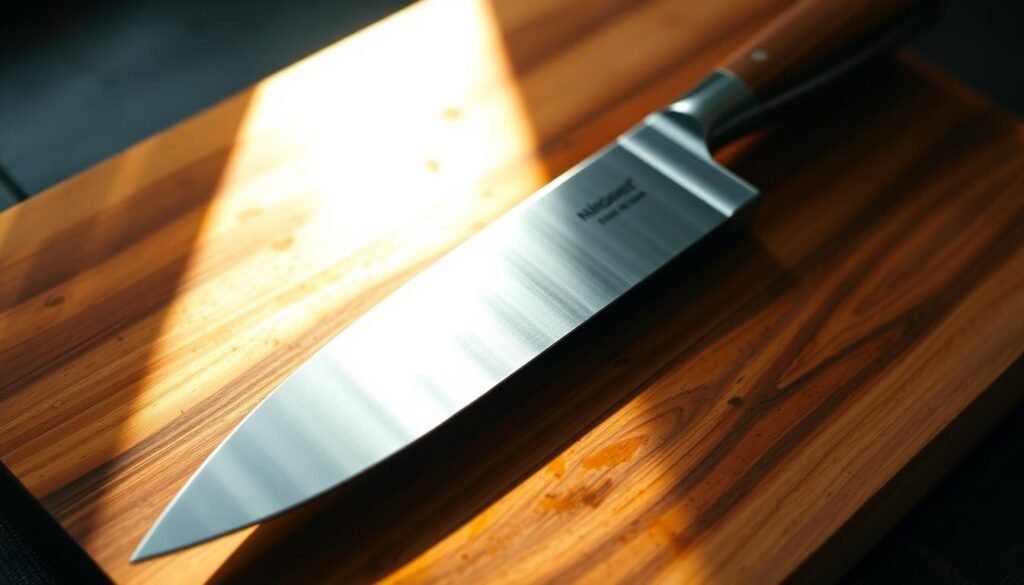
Western vs. Japanese Knife Styles
The choice between Western and Japanese knives is big. Western knives are tough and versatile. They’re great for chopping bones and thick veggies.
Japanese knives are sharp and precise. They’re perfect for slicing and dicing.
Size and Weight Considerations
The size and weight of a knife matter a lot. A big knife is good for chopping but hard for small tasks. A small knife is better for detailed work but tough for big jobs.
The weight of the knife is also key. A heavy knife chops well. A light knife is better for precise cuts.
Top Chef Knife Brands Worth Investing In
Some chef knife brands are top-notch. Wüsthof and Shun are known for quality. They use high-carbon stainless steel and have comfy handles.
Buying from a trusted brand means your knife will last and work well.
Testing a Knife Before Purchase
Try a knife before you buy it if you can. Hold it, feel its balance, and check its sharpness. This helps you decide if it’s right for you.
Many stores let you try knives. They might even show you how to use them.
Proper Care and Maintenance to Maximize Your Chef’s Knife Lifespan
How well you care for your chef’s knife affects its life and performance. A good chef’s knife is a big investment for home cooks. With the right care, it can be a trusted kitchen tool for many years.
Cleaning and Storage Best Practices
Wash your chef’s knife right after using it to stop bacteria and keep it sharp. Use mild soap and dry it well. Store it in a knife block or on a magnetic strip. Don’t keep knives in a drawer to avoid damage or injury.
- Hand wash with mild soap
- Dry thoroughly to prevent rust
- Store in a knife block or on a magnetic strip
Sharpening Techniques and Frequency
Sharpening your knife regularly keeps it working well. Sharpen every 1-3 months if you use it a lot. Use a whetstone or sharpening steel. For beginners, chef knife reviews and tutorials can help.
- Determine your sharpening frequency based on usage
- Use a whetstone or sharpening steel
- Follow online tutorials for technique guidance
Common Mistakes That Damage Knives
Avoid mistakes like putting your knife in the dishwasher or using it on hard surfaces. These can cause rust, dullness, or breakage. Being careful can make your knife last longer.
Professional Maintenance vs. DIY Care
Some tasks, like complex sharpening, are best left to pros. But, you can handle many care tasks at home. Learning DIY care can save money and keep your knife sharp. Look for chef knife recommendations for both DIY and professional help.
- Learn basic sharpening and cleaning techniques
- Know when to seek professional maintenance
- Follow chef knife reviews for product-specific care advice
Conclusion: Elevating Your Home Cooking with the Right Tool
A high-quality chef knife is key for any home cook wanting to improve. It makes cooking more precise, efficient, and safe.
Knowing how a Chef’s Knife works helps you pick the best one. It’s important for chopping veggies or slicing meat.
Keeping your Chef’s Knife in good shape is also vital. Clean it right, store it well, and sharpen it often. This way, it will last a long time.
Choosing a good chef knife is a smart move. It helps you cook better, faster, and safer.
FAQ
What makes a chef’s knife high-quality?
What is the difference between Western and Japanese chef’s knives?
How often should I sharpen my chef’s knife?
What are the best brands for chef’s knives?
How do I properly clean and store my chef’s knife?
Can I use a chef’s knife for chopping hard ingredients like bones?
What size chef’s knife is most versatile for home cooking?
Is it worth investing in a professional chef’s knife?

From beginner-friendly tips to no-fuss dessert ideas, Ryan is all about helping people enjoy baking and treat-making without the stress. Whether you’re whipping up something for a party or just craving something sweet, Ryan’s practical approach makes it easy to create desserts that taste great and don’t take all day.
Subscribe to Our Newsletter

